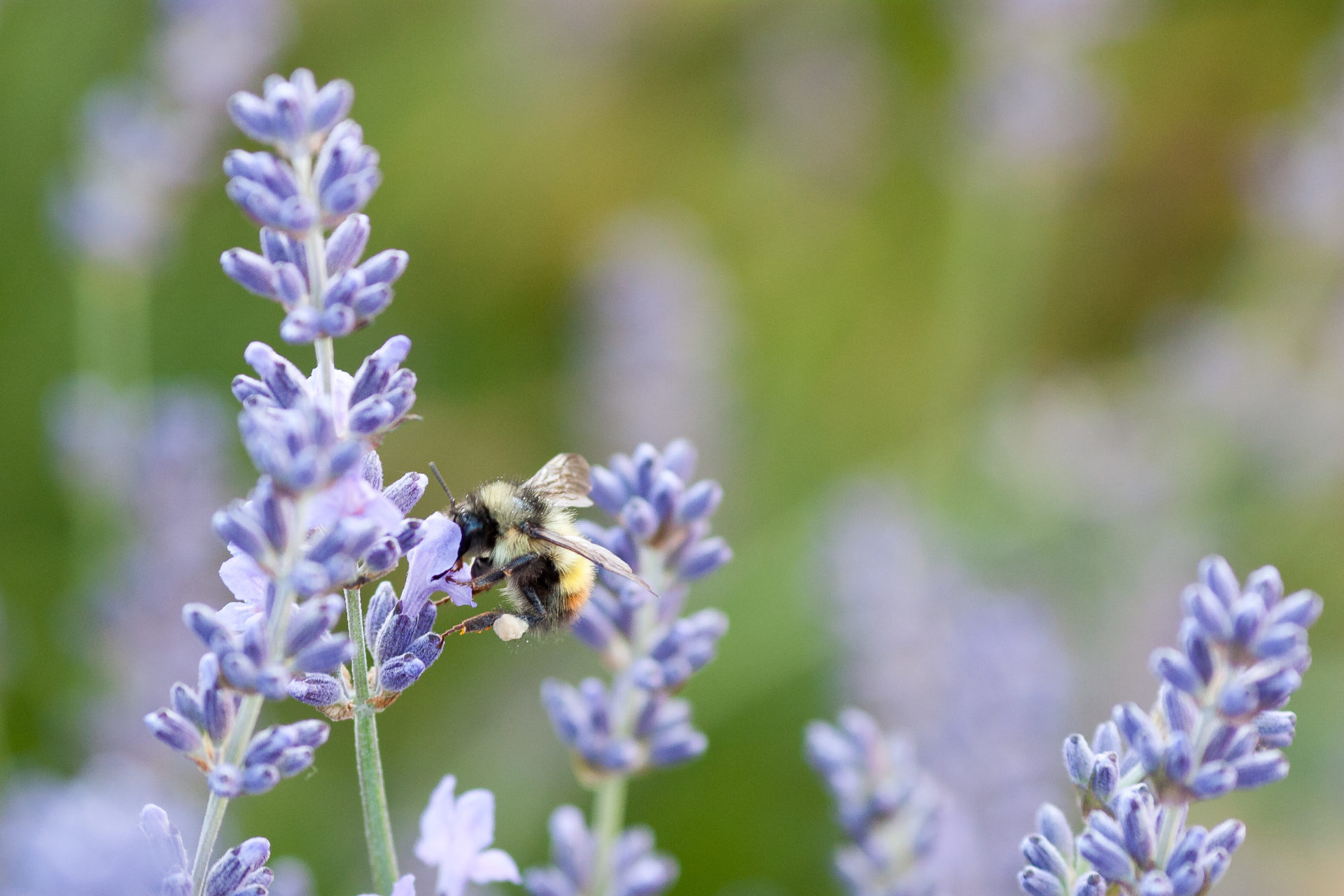The Diamond Sutra
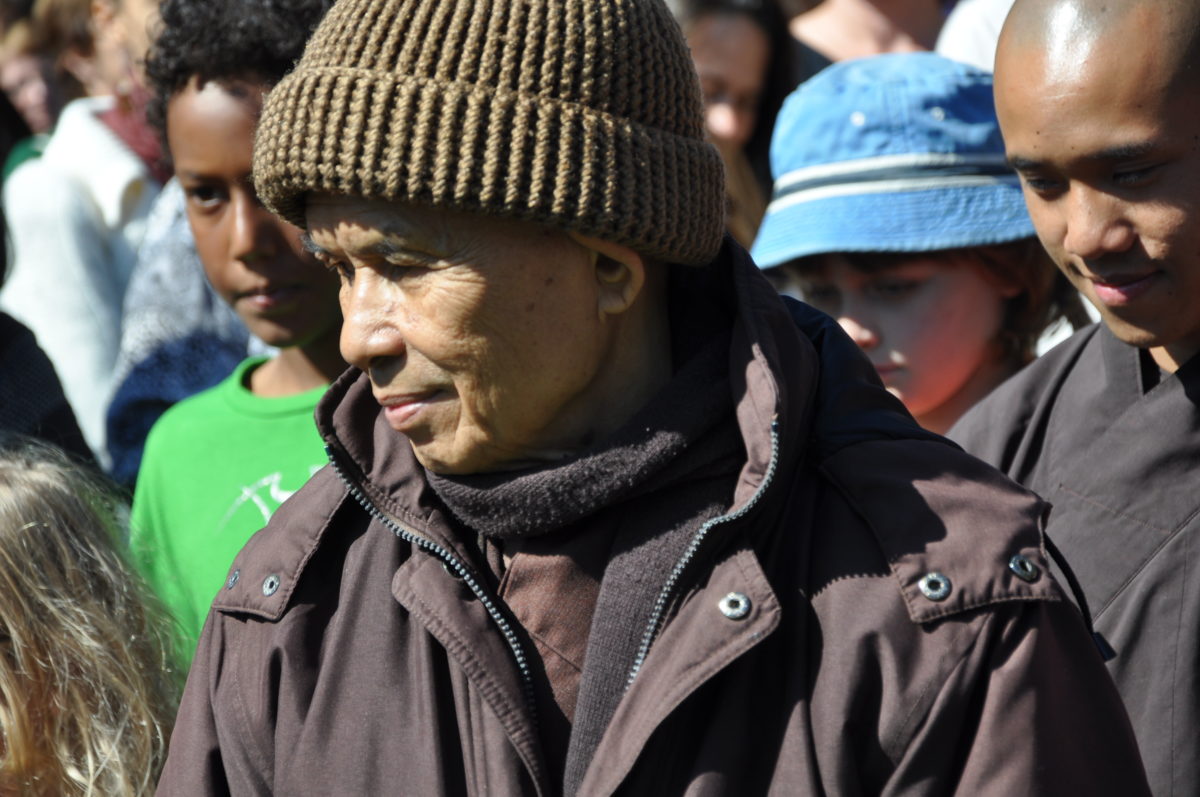
Ocean of Peace Meditation Hall
Deer Park Monastery
Sunday, September 25, 2011
Right view is the foundation of the Noble Eightfold Path presented by the Buddha. Right view helps us to think correctly. It helps us to say things correctly, and to do things correctly, so we don’t create suffering and despair for ourselves and for others.
The Diamond Sutra

Ocean of Peace Meditation Hall
Deer Park Monastery
Sunday, September 25, 2011
Right view is the foundation of the Noble Eightfold Path presented by the Buddha. Right view helps us to think correctly. It helps us to say things correctly, and to do things correctly, so we don’t create suffering and despair for ourselves and for others. When we practice mindfulness, we produce thoughts in alignment with right thinking, full of understanding and compassion. Then we only create happiness; we do not create suffering. With the practice of right speech, we say things that move us in the direction of understanding, compassion, and nondiscrimination. With the practice of right action, our physical action will only protect, save, help, and rescue. That is why the practice of mindfulness based on right view can help heal ourselves and help heal the world. We can start right away if we have a friend or a community of practice supporting us.
We have to cultivate right view. If you listen to a Dharma talk or read a book, you’ll get some ideas about right view. But right view is something you experience directly, not through concepts and ideas. Right view is the kind of insight, the kind of under-standing, that can transcend the notion of being and non-being. It is not easy to understand.
When we speak of the birth of something, the creation of something, we are already caught in the notion of being and non-being. To be born means from the realm of non-being you pass into the realm of being. And to die means from the realm of being you pass into the realm of non-being. From someone you suddenly become no one. That’s how we think, but that is not right thinking.
So if you are caught in the notion of being and non-being, you are caught also in the notion of birth and death. When you observe reality as it is, you can touch the truth that reality is free from the notion of birth and death, being and non-being.
Can we speak about the birth of a cloud? According to our thinking, to be born means from nothing you become something. But looking deeply, you know the cloud has not come from nothing. The cloud has come from the water in the ocean, the heat generated by the sun, many things like that. So it is very clear that our cloud has not come from the realm of non-being.
The moment you see the cloud, that is a new manifestation. Before that, it was there in another form. So the true nature of the cloud is the nature of no birth. The cloud has never been born. It has not come from the realm of non-being into the realm of being.
When you look up into the sky and you do not see your beloved cloud anymore, you think your cloud has died, has passed from the realm of being into non-being, and you cry. But the fact is that your cloud has not died. It is impossible for a cloud to die. A cloud can become rain or snow or ice, but it is impossible for a cloud to become nothing. So the true nature of the cloud is the nature of no birth and no death. And the same thing is true of everything else, including ourselves, including our grandfather, our great-grandmother. They have not passed into the realm of non-being. If we look deeply, we can still see them around very close, in their new manifestations.
[Thay pours a cup of tea.] I’m pouring my cloud into the glass mindfully. If you are a practitioner of mindfulness, you can see the cloud in the tea. Your cloud has not died; it has just become the tea. The tea is the continuation of the cloud. When you drink your tea mindfully, you know that you are drinking your cloud. You already have a lot of cloud inside. This is only another cloud coming in to nourish you.
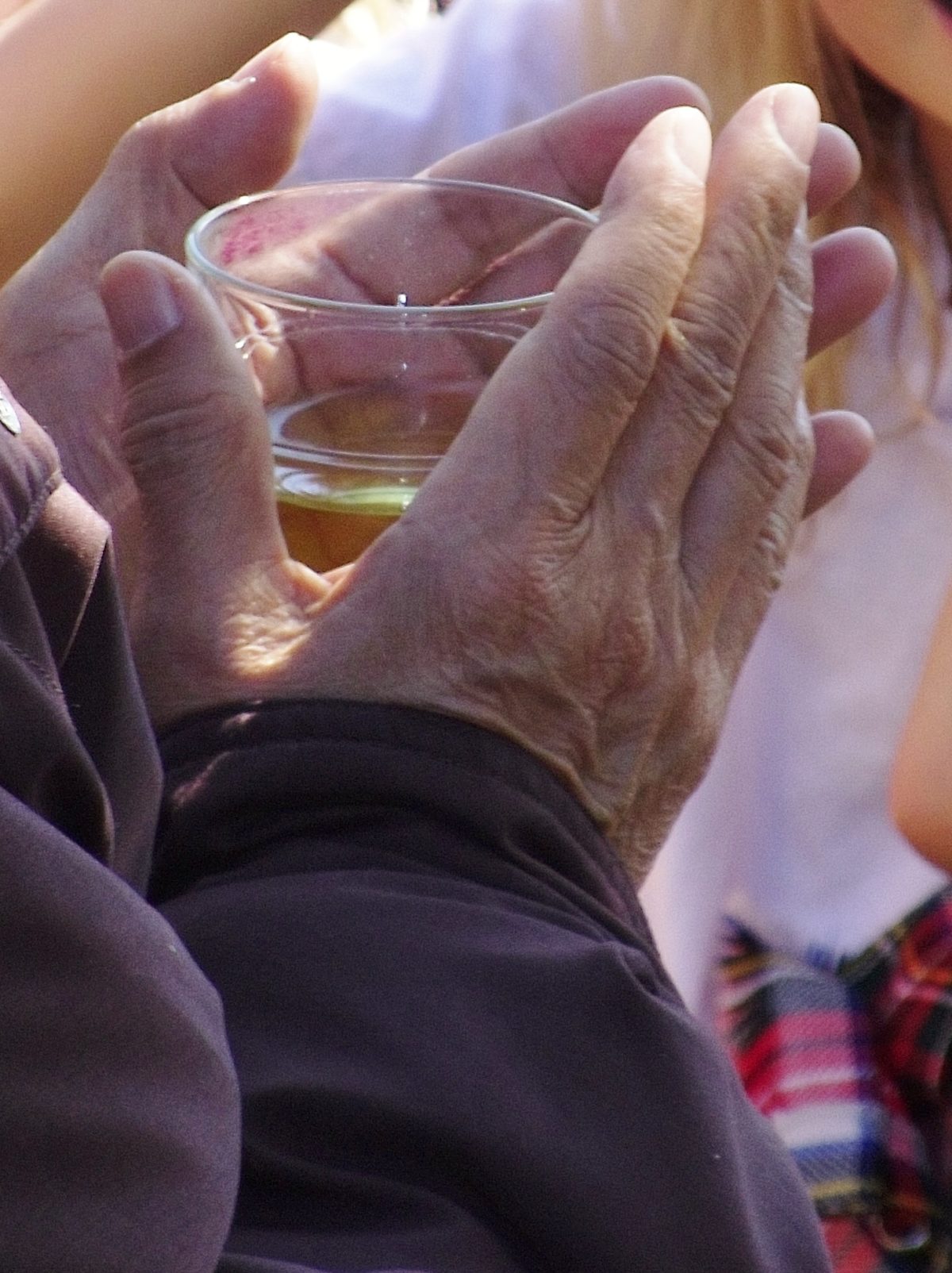
You are like a cloud. Your nature is the nature of no birth and no death. Being afraid of dying is not right thinking, because nothing can pass from being into non-being. Nothing can pass from non-being into being. If you cannot see the cloud in this tea, you have not really seen the tea. Mindfulness and concentration bring insight, which allows you to look at the tea and see the cloud.
In the Diamond Sutra, a very famous sutra in the Zen tradition, we learn that there are four notions that you have to remove if you don’t want to suffer. These four notions are the crown of discrimination and fear and hate.
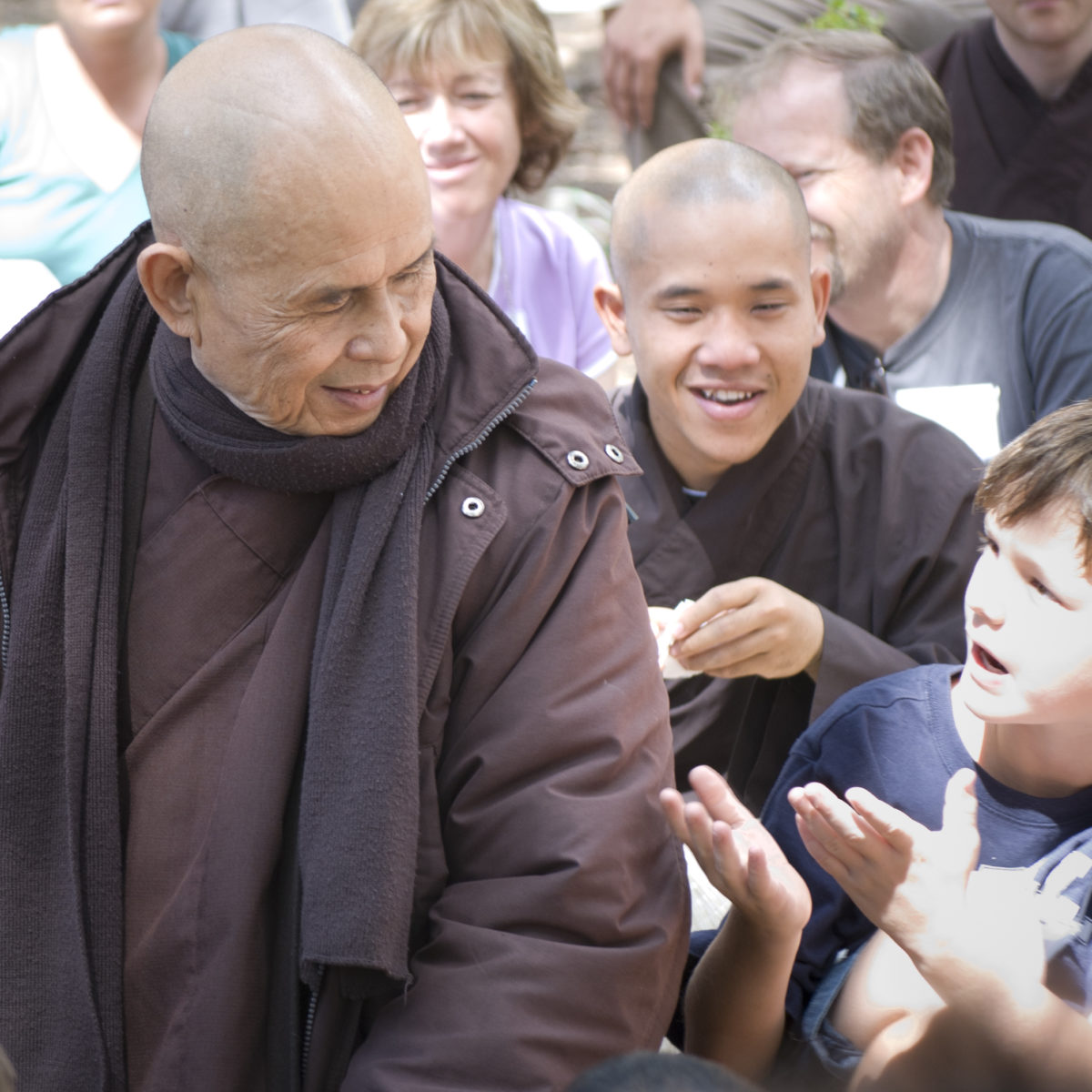
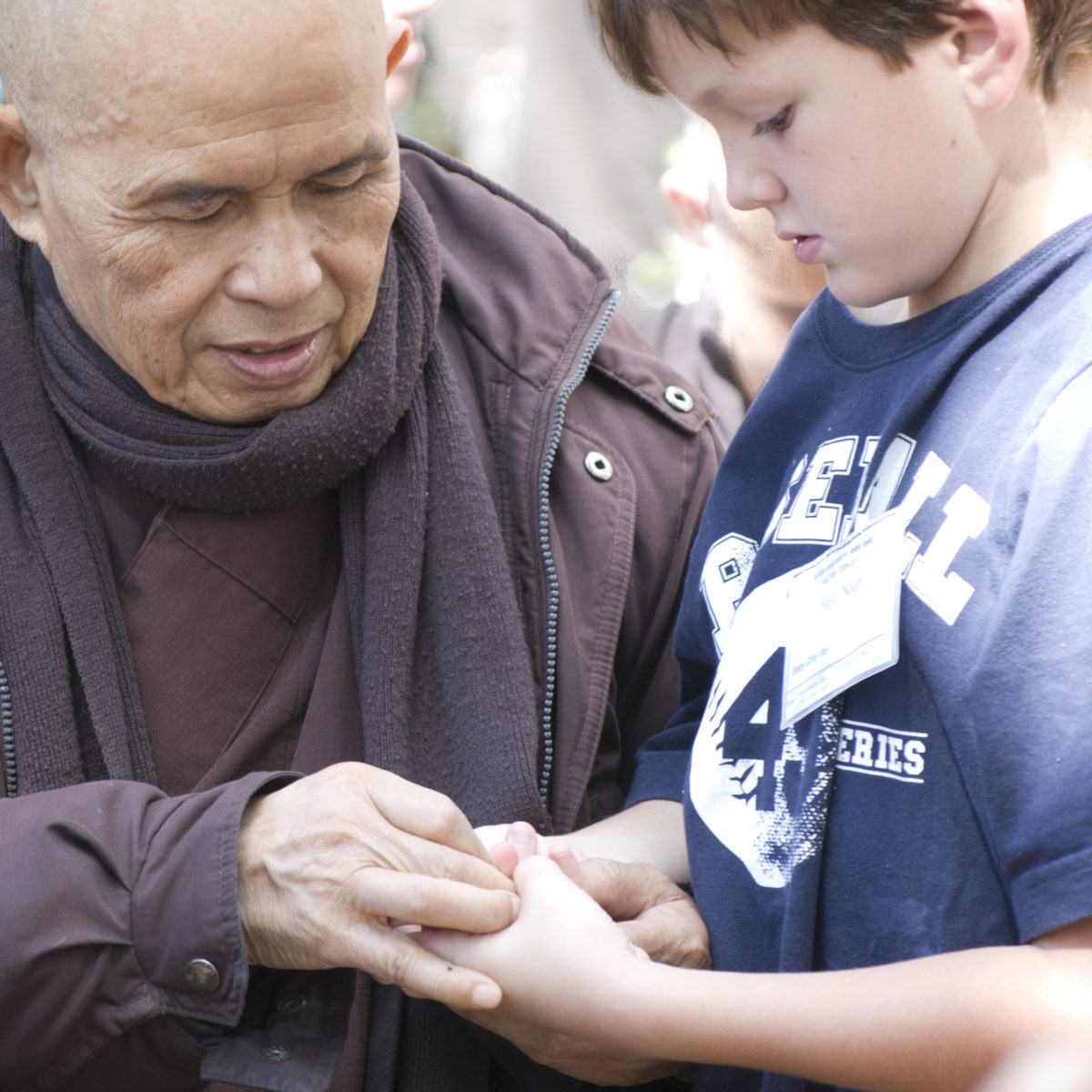
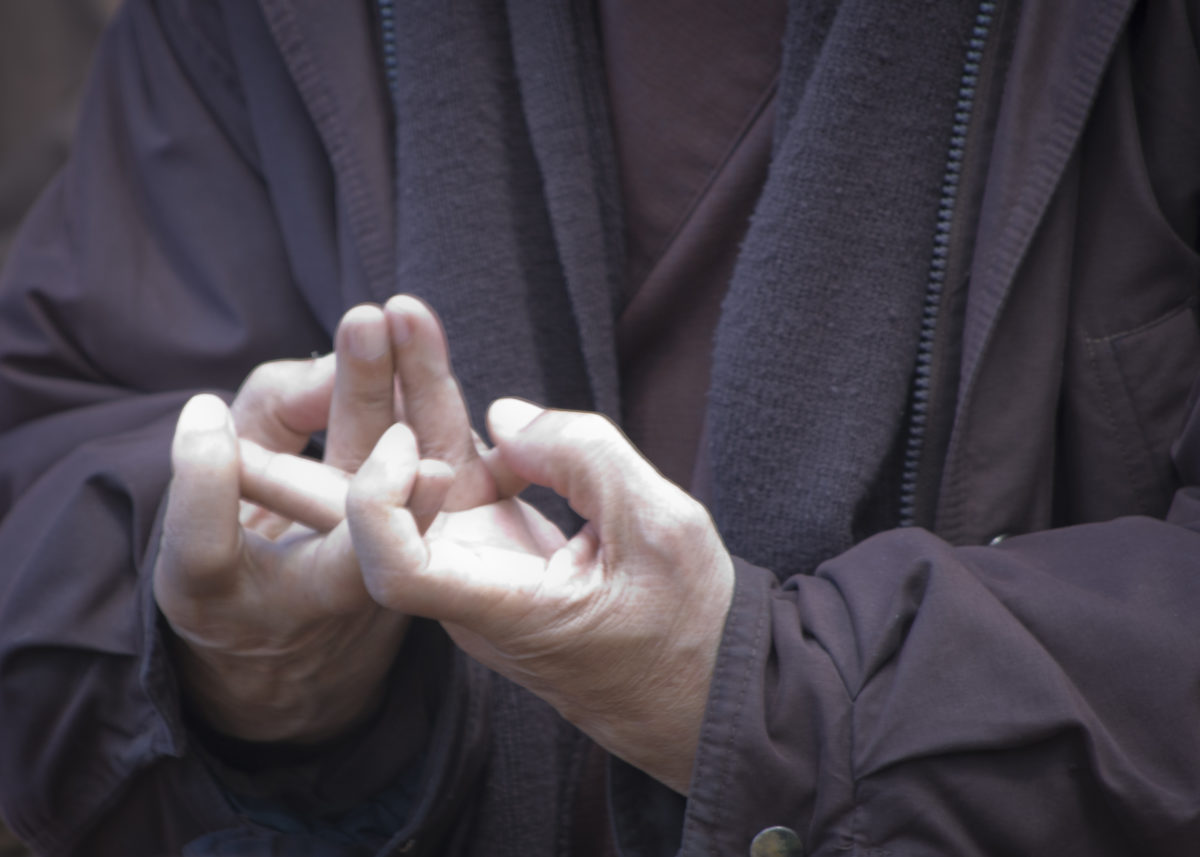
The Notion of Self
First is the notion of self. You separate reality into two parts. You distinguish between self and non-self. One part is yourself, the other part is the non-self. But looking into what we call a self, we see only non-self elements.
As a practitioner of mindfulness, you look deeply into this flower and you see that it is made only of non-flower elements. There’s a cloud inside also, because if there’s no cloud, there’s no rain and no flower can grow. So you don’t see the form of a cloud, but the cloud is there. And that is the practice of what we call signlessness. You don’t need a sign, a certain form of appearance in order to see it. There’s the sunshine inside. We know that if there is no sunshine, no flower can grow. There is the topsoil inside. Many things are inside: light, minerals, the gardener. It seems that everything in the cosmos has come together to help produce this flower. If we have enough concentration we can see that the whole cosmos is in the flower, that one is made by the all. We can say that the flower is made only of non-flower elements. If we return the cloud to the sky, return the light to the sun, the soil to the earth, there is no flower left. So it’s very clear that a flower is made only of non-flower elements.
What we call “me,” “myself,” is like that, too. We are also a flower. Each of us is a flower in the garden of humanity, and each flower is beautiful. But we have to look into ourselves and recognize the fact that we are made only of non-us elements. If we remove all the non-us elements, we cannot continue. We are made of parents, teachers, food, culture, everything. If we remove all of that, there is no us left.
When a young man looks into himself, he can see that he is made of non-self elements. If he looks into every cell of his body, he will see his father. His father is not only outside; his father is inside of him, fully present in every cell of his body. Suppose he tries to remove his father; there’s no son left. If we remove the father, remove the mother, the grandfather, the grandmother, if we remove our education, our culture, the food we eat, then there’s no us left. So the young man can see that his father is in him. He is the continuation of his father. He is his father.
It’s like the tea is a continuation of the cloud. Suppose the tea hates the cloud. The tea says, “I don’t want to have anything to do with the cloud!” That’s nonsense. And yet there are young men who are so angry at their fathers, they dare to say, “I don’t want to have anything to do with that person.” Because they have not looked deeply, they do not see that they are the continuation of their father. They cannot remove their father from themselves; they are their father. So to get angry at your father is to get angry at yourself. That is the insight you get from the practice of mindfulness and concentration. If you have that insight, you are no longer angry at your father. You know that if your father suffers, you suffer. If you are happy, your father is happy also. No more discrimination between father and son, because father is made of non-father elements and son is made of non-son elements. Everything is like that.
So the first notion that the Diamond Sutra advises us to remove is the notion of self. If you can see, in the light of interbeing, that you are in me and I am in you, you’ve got the insight. Anger and the desire to punish are no longer there. Removing the notion of self is the basic action for peace.
If the Palestinians look deeply, they see that the suffering of the Israelis is their own suffering, and that their happiness is also the happiness of the Israelis. If they can recognize that they inter-are, that their happiness and suffering depend on each other’s, then they will release their anger, their fear, and their discrimination, and they can make peace easily. If the Hindus and the Muslims look deeply and see they are in each other, then there will be no conflict, no war.
So the removal of the notion of self is crucial for peace. If we can do that, we can be free from discrimination, separation, fear, hate, anger, and violence. With mindfulness and concentration, you can discover the truth of no self, the truth of interbeing.
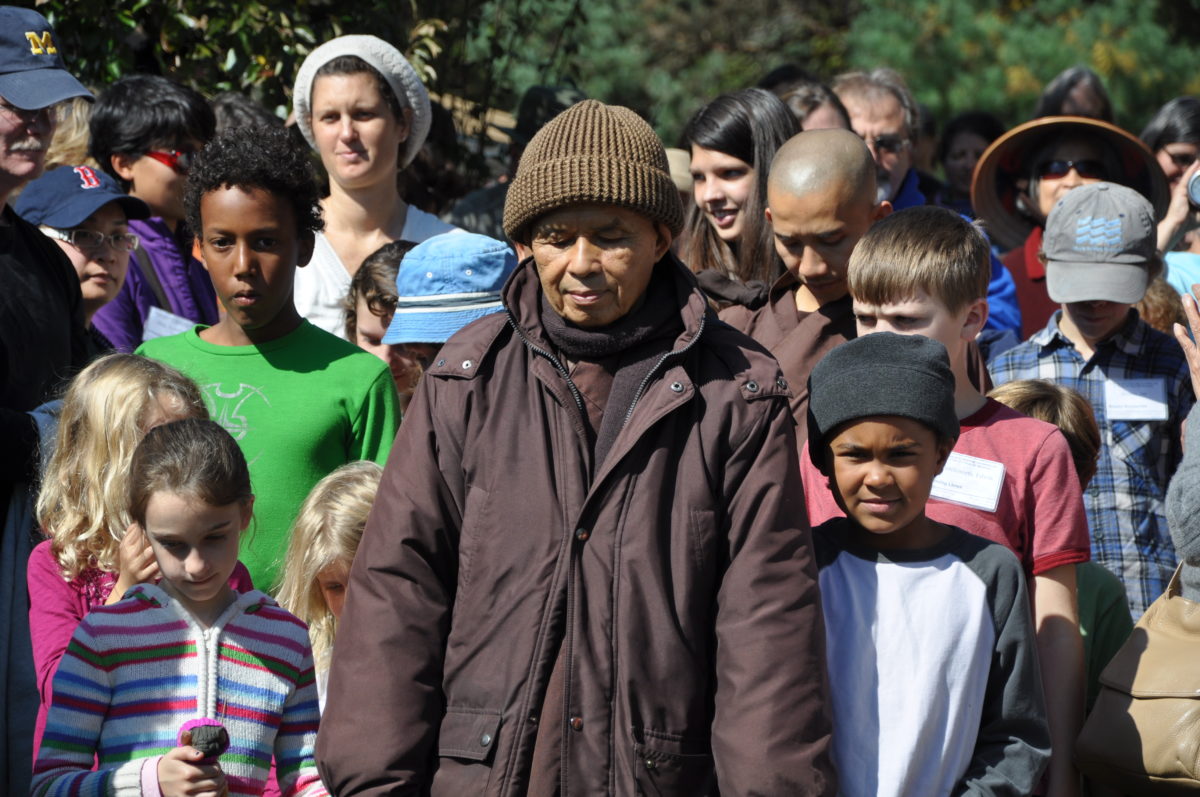
The Notion of Being Human
The second notion that the Diamond Sutra advises us to remove is the notion of man, human. Man is made only of non-man elements. Man, we know, is a very young species on earth. We are made of minerals, vegetables, and animals. Humans have human ancestors, but we also have animal ancestors, vegetable ancestors, and mineral ancestors. They are still in us. We are the continuation of our ancestors. We still carry the minerals, the vegetables, and the animals within us. If you have the insight that man is made only of non-man elements, you will protect the ecosystem. You will not destroy this planet. That is why the Diamond Sutra can be seen as the most ancient text on the teaching of deep ecology. In order to protect man, you have to protect minerals, vegetables, and animals.
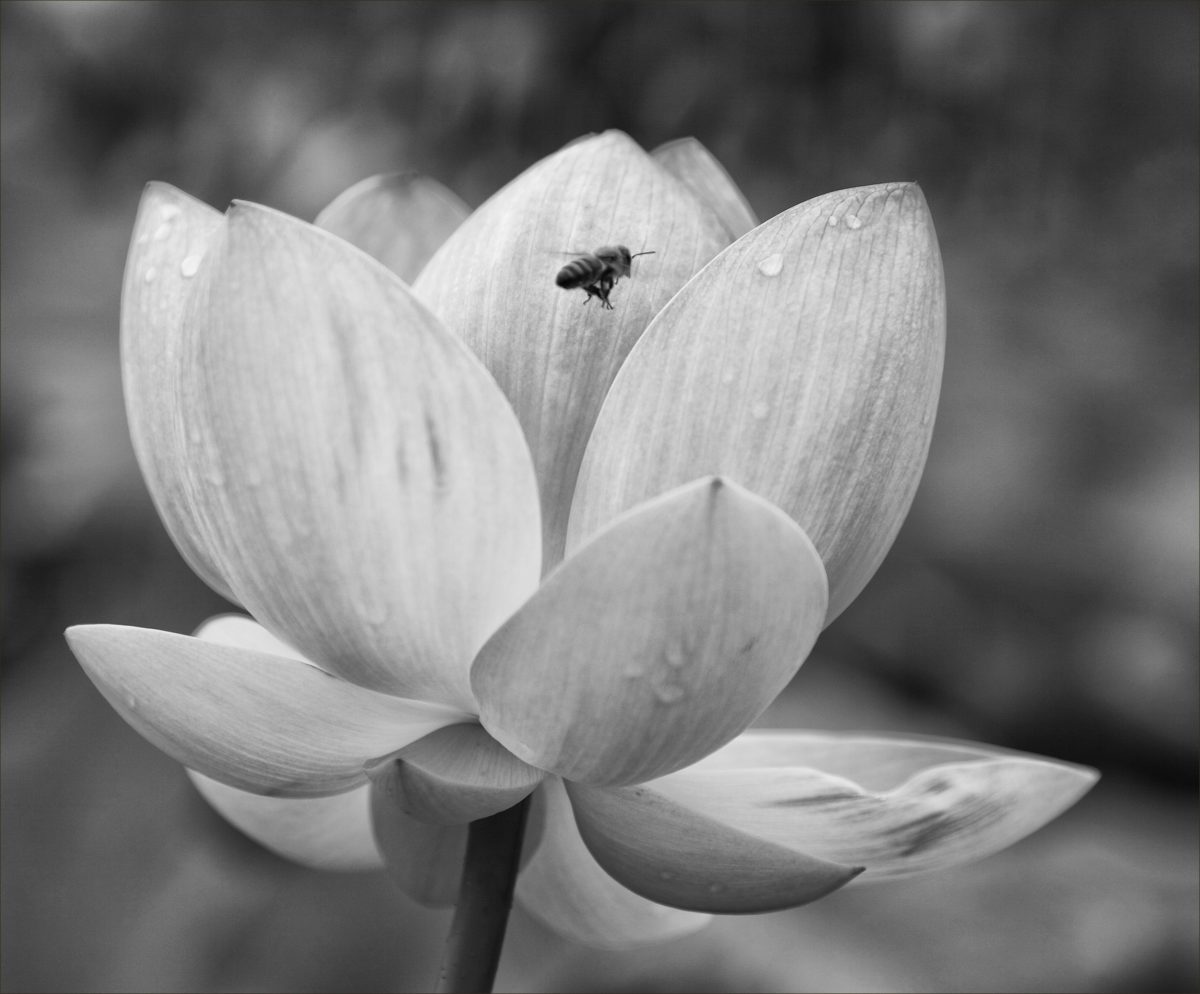
The Notion of Living Beings
The third notion that the Diamond Sutra advises us to remove is the notion of living beings. When I was ordained as a novice monk at the age of sixteen, my teacher showed me how to bow to the Buddha. “My child, before you bow to the Buddha, you have to meditate.” He gave me a short verse to memorize: “The one who bows and the one who is bowed to, the nature of both is empty.” That means that I am made of non-self elements. I am empty of a separate self. And you, the Buddha, you are also made of non-you elements. That means that you are in me, and I am in you. There is non-discrimination between the Buddha and a living being.
If you do not have that kind of insight, communication is impossible. You have to see the true relationship between you and Buddha. You must see that the Buddha is made only of non-Buddha elements. And you must see that you are made of non-you elements. You must see that you are in the Buddha and the Buddha is in you. Before you have that understanding, you should not bow, because you think that you and the Buddha are two separate entities. So there is a discrimination between Buddha, the enlightened one, and living beings; a discrimination between the creator and the creature. You have to see God in yourself, and you have to see yourself in God, in order for true communication to be possible.
Looking into a buddha, what do you see? You see a lot of afflictions, sickness, and despair that has been transformed. So a buddha is made of non-buddha elements. Before that person became a buddha, she suffered from anger, fear, hatred, and wrong perceptions. But because she knew how to practice mindfulness and she got insight, she became free. She became a buddha.
So looking into a buddha, you see non-Buddha elements. If you do not see non-Buddha elements in the Buddha, you have not seen the Buddha. Don’t imagine that the Buddha is an entity that is separate from us human beings. The safest place to look for a Buddha is in yourself.
If you know how to grow lotus flowers, you know that a lotus flower is made only of non-lotus elements. Among the non-lotus elements is the mud. The mud does not smell very good; it is not very clean. But without mud you can never grow a lotus flower. So if you look into a lotus flower, and you have not seen the mud in it, you have not seen the lotus flower. It is only with mud that you can grow a lotus flower. It is with the suffering, afflictions, fear, and anger that you can make the compost in order to nourish the flower of Buddha within ourselves.
That is why in the Lin-chi Zen tradition, when you look into the living being, you see the Buddha. When you look into the Buddha, you see the living being, because you are made of non-you elements and the Buddha is made of non-Buddha elements. If you have that insight, communication between you and the Buddha will be very deep. Otherwise, you will be worshipping an idea that is not reality.
You are the Buddha. You have Buddha nature, and if you practice mindfulness and concentration, you can transform afflictions. That is why the Diamond Sutra advises us to remove the notion of living beings.
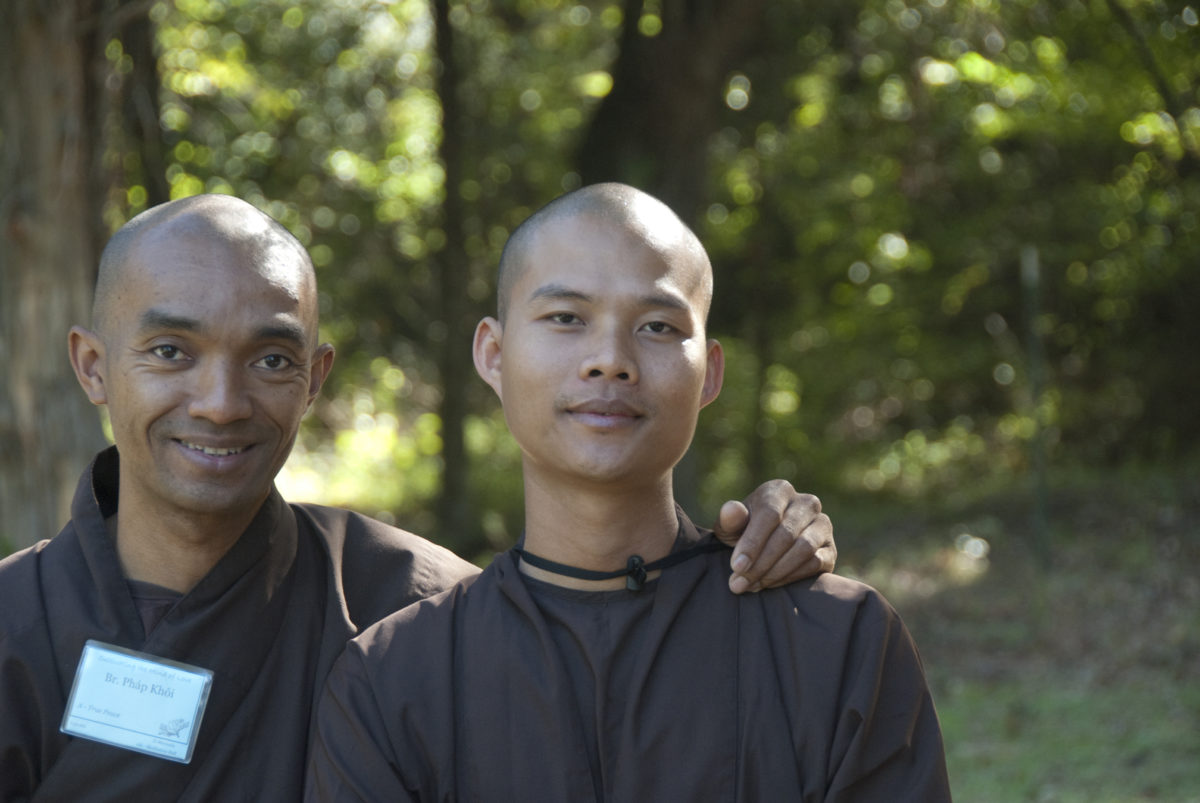
The Notion of Life Span
The fourth notion is the notion of life span. Suppose we draw a line from left to right, representing time. And suppose we pick one point here and call it B, representing birth, and another point, we call it D, representing death. Usually we think that birth is the point where we start to exist, to be. So the segment from birth, from B on, is being. Before we are born, we did not exist. So the segment starting with D represents non-being.
When we come to D—we are very afraid of coming to this point. [laughter] It’s not pleasant to think of D. But if you can remove your notions, your wrong thinking about D, you are saved by right understanding and you are no longer afraid of D; not by a god, but by right understanding.
We believe that to be born means from the realm of non-being you pass into the realm of being. To die means from the realm of being you pass again into the realm of non-being. From someone you suddenly become no one. You are caught in the notion of birth and death; in the notion of being and non-being.
Many of us believe that the cosmos has come from the realm of non-being into being. That is how we understand creation. Both believers and scientists believe that the cosmos has a beginning. Scientists speak about how the cosmos has come to be, with theories like the Big Bang. It means before that, there was no cosmos; there was no universe. The Big Bang, and then later on, the Big Crunch. [laughter]
We need the practice of mindfulness and concentration to get the insight that liberates us from these notions. The notion of birth and death. The notion of being and non-being.
A well-known theologian named Paul Tillich described God as “the ground of being.” But if God is the ground of being, who will be the ground of non-being? You cannot conceive of God in terms of being and non-being. God, the ultimate, must transcend both notions. So to describe God in terms of being is to reduce God to something much less than God.
Many of us try to have life and to eliminate death. But how is life possible without death? Death is the very foundation of life. Life is the foundation of death. They always go together. Do not believe that death is something that waits for us down the road. No. Because life is here, death is also here at the same time. You cannot say that now is birth, now is life, and death is for later. That is not right thinking.
Science can help us understand this. We know that at every moment, many cells in our body die, right? And every day new cells are born. So many cells are dying in one second and we are too busy to organize funerals for them. [laughter] Birth and death happen in the here and the now, in every moment, in every millisecond. Why are we afraid of death? We are experiencing death in every moment, because where there is life, there is death.
The same is true of happiness and suffering. Many of us think that happiness alone is enough; we don’t need suffering. But suffering is something that helps create happiness. If we look deeply into the suffering of the other person, we will come to understand the root of their suffering. Understanding suffering gives rise to compassion and love. Understanding and love are the foundation of happiness. If you do not have understanding and compassion, you are not a happy person. Compassion is born from understanding. If you understand your own suffering and if you understand his or her suffering, then love and compassion will be possible.
It is the mud that helps to produce the lotus. It is the suffering that helps produce the flower of happiness. Let us not discriminate against the suffering. Let us learn how to make good use of the suffering in order to create happiness. Let us learn how to make good use of the mud in order to produce lotus flowers.
If you believe that you are born at one point and you will die at another point, after which nothing remains, you are caught in the notion of life span. It is impossible for you to die. It is impossible for the cloud to pass into the realm of non-being. Right view transcends the notion of being and non-being, birth and death. That is why this insight can help produce right thinking, right speech, and right action. It has the power to heal and to nourish.
Many of us think that happiness is made of power, fame, sex, and wealth; but many people running after these objects suffer deeply. Those of us who practice mindfulness and concentration know that every moment can be a happy moment, because a moment of happiness is a moment when you are truly in the here and the now, and you notice that so many wonders are in you and around you. You can be happy right here and right now.
That is the teaching of the Buddha. It is possible to be happy and joyful in the here and the now. Every in-breath, every step can help you touch the wonders of life. Recognize that you are luckier than so many people. And if you are happy, you have an opportunity to help other people.


